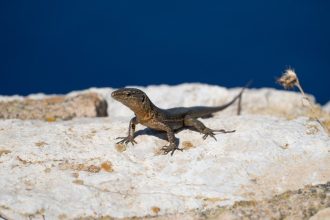The groundbreaking discovery of an ancient Mayan city, previously thought impossible to find, has the potential to reshape our understanding of past civilizations and their ways of life.
While the Mayans are often remembered for their inaccurate end-of-the-world prediction in 2012, they were also master builders, renowned for their impressive stone pyramids that have stood the test of time.
These towering structures are a testament to a rich civilization and culture that spanned millions of people, shrouded in mystery regarding its eventual decline.
READ MORE: VIDEO: Moment singer J Balvin spots plectrum-shaped ‘UFO’ hovering in sky
Although the exact reasons for the Mayan civilization’s collapse remain unknown, it is believed that between 850 AD and 1000 AD, they began to decline and eventually collapsed. However, the Mayans were not completely wiped out, as their descendants still live today. Our knowledge of their ancient world has been significantly enhanced by the recent discovery of one of their lost cities.
Hidden deep within the Guatemalan jungle of El Mirador, this ancient city was nearly impossible to locate until now. It comprises approximately 400 interconnected settlements, some dating back 3,000 years, linked by a network of roads.
Archaeologists have uncovered 417 settlements connected by about 110 miles of roads, described as the “first freeway system in the world.”
The authors of the study, which detailed this remarkable discovery, revealed to the Washington Post that this ancient interconnected city was constructed around 1,000 BC. They emphasized that it unlocks “a whole volume of human history that we’ve never known before.”
Richard Hansen, a professor of archaeology at Idaho State University, hailed the findings as a “game changer,” while archaeologist Enrique Hernández from San Carlos University compared the significance of this discovery to that of the Egyptian pyramids.

Hernández has dedicated months each year for the past two decades to excavating El Mirador. The recent advancements in technology, particularly the use of Lidar (light detection and ranging), enabled researchers to uncover the full extent of the ancient city.
This technology allowed them to see the sophisticated network of interconnected settlements and the impressive road system that held it all together.
With a clearer understanding of the site’s scope, researchers can now plan more targeted expeditions to explore and learn more about this ancient city.

However, with 417 settlements to investigate, they have a monumental task ahead. This discovery promises to yield significant insights into the lives and achievements of the Mayan civilization, offering a new perspective on an ancient world that continues to captivate our imaginations.
READ MORE: VIDEO: Moment farmer encounters tiny ‘goblin’ blocking the road










